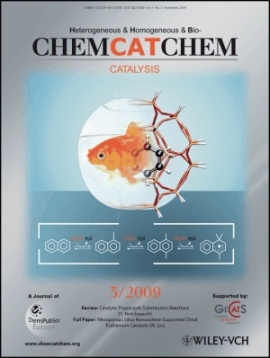D. Lesthaeghe, P. Vansteenkiste, T. Verstraelen, A. Ghysels, C. Kirschhock, J.A. Martens, V. Van Speybroeck, M. Waroquier
Journal of Physical Chemistry C
Abstract
Silicalite-1 zeolite exhibits a characteristic pentasil framework vibration around 540−550 cm−1. In the initial stages of zeolite synthesis, however, this band is observed at much higher wavenumbers: literature shows this vibration to depend on particle size and to shift over 100 cm−1 with increasing condensation. In this work, the pentasil vibration frequency was derived from theoretical molecular dynamics simulations to obtain the correct IR band assignments for important nanoparticles. The IR spectroscopic fingerprint of oligomeric five-ring containing precursors proposed in the literature was computed and compared with experimental data. Our theoretical results show that, while isolated five-membered rings show characteristic vibrational bands around 650 cm−1, the combination of five-membered rings in the full MFI-type structure readily generates the bathochromic shift to the typical pentasil vibration around 550 cm−1. As opposed to what was previously believed, the IR band does not shift gradually as nanoparticle size increases, but it is highly dependent on the specific way structural units are added. The most important feature is the appearance of an additional band when double five-membered rings are included, which allows for a clear distinction between the key stages of early zeolite nucleation. Furthermore, the combination of the simulated spectra with the experimental observation of this spectral feature in nanoparticles extracted from silicalite-1 clear solutions supports their structured nature. The theoretical insights on the dependency of pentasil vibrations with the degree of condensation offer valuable support toward future investigations on the genesis of a zeolite crystal.


